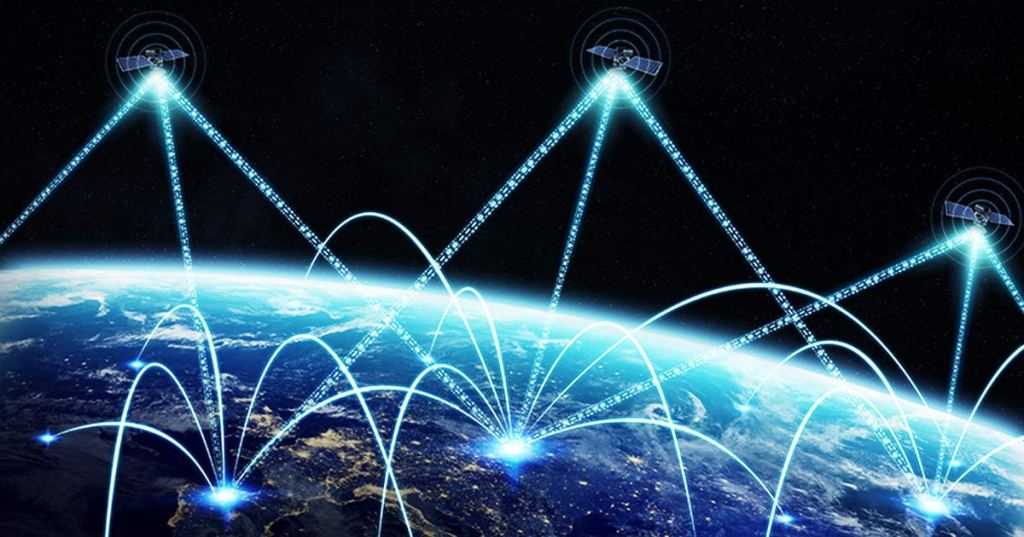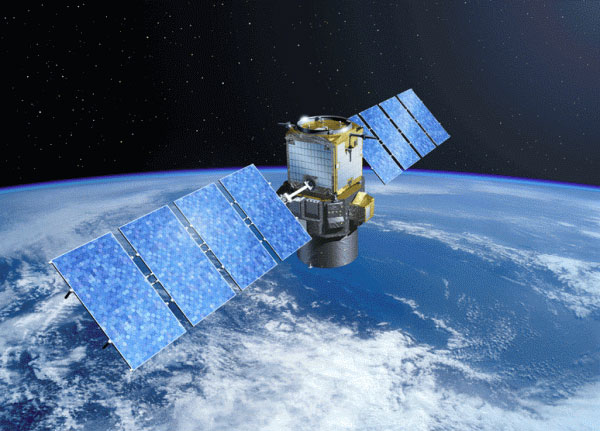Our Shortened Future

If the plan is not halted, by 2030 some 80,000 satellites will have been launched into low-earth orbit (LEO) to transmit 5G telecommunications to millions of terrestrial base stations and to cell phones. Along with the dazzling array of 9,000 visible stars that frame the creation stories of indigenous peoples and bring humility and wonder to all mankind, the skies will be cluttered with as many as 80,000 shiny objects beaming down 5G (and future G’s). They will target the earth night and day with phased arrays of beam-directed wireless signals, filling our magnetosphere with millions of invisible pulsed and modulated digital streams at frequencies from 10 to 80 GHz. Added to terrestrial exposure 24/7/365, these are higher levels than ever experienced by living beings, possibly excepting lab rats being tested by a malicious scientist. Rocket launches will pollute the ionosphere, the lower part of our atmosphere, with fuel exhaust and debris which could make future space travel unsafe and further pollute our air, water and land. They may also interfere with weather forecasting.
The ionosphere, a natural source of high voltage charged to about 300,000 volts, controls the global electric circuit by which the earth functions. The magnetosphere, overlapping it and extending further above the earth, has already been altered by harmonic radiation from our power lines, and the continued expansion of this effect “threatens the viability of all life on Earth” according to Robert O. Becker (1985). The satellites may alter the earth’s magnetic environment “beyond our ability to adapt” (Arthur Firstenberg – see the 5G Space Appeal). More than 215 scientists from 41 countries have signed an appeal calling for a moratorium on new launches until an environmental impact statement can be done.
The front-runner in satellites is billionaire Elon Musk’s private commercial venture SpaceX. The U.S Army has signed a ($28 m) three-year trial contract with SpaceX to handle its telecommunications. The company will likely consult on the military’s plans to set up a Global Emergency Network and ways to improve communications during military maneuvers in real time, such as managing surveillance and attack drones. Further, SpaceX is developing a Super Heavy rocket booster for the U.S. military capable of moving 100 tons of cargo anywhere in the world in an hour. (https://www.businessinsider.com/musks-spacex-partners-us-military-to-deliver-weapons-by-rockets-2020-10). In the near future, it will be used to launch Musk’s huge reusable Starship rocket, selected by NASA to carry 100 settlers and their support equipment to the Moon, and later to Mars. (Amazon’s CEO Jeff Bezos has challenged that award.)
These activities seem to be aimed at extending the reach of U.S> power not only across this planet but to others in colonial fashion. Does this public-private alliance shift accountability for damage or catastrophe away from the national government and give it “plausible deniability”? A small company, Ligado Networks, caused the Pentagon distress when it applied for frequencies in the L-band (1-2 GHz) that might leak over and interfere with the Global Positioning System (GPS). Regardless, the FCC approved Ligado’s application, with “stringent conditions,” to deploy this valuable piece of spectrum for its 5G satellite assets. Who, then, can rein in the FCC?
Another question closer to home is whether the satellites program qualifies for a National Environmental Protection Agency (NEPA) review. No environmental impact statement has yet been made public. The FCC has not properly consulted with other government agencies. Nor have these issues been addressed by President Biden or the U.S. Space Force. A small California satellite company, Viasat, filed a demand last May in the D.C. Circuit Court of Appeals that the FCC halt all new Starlink launches and permits for its mega-constellation before environmental harms such as the effects of debris, light pollution and disintegration in the atmosphere can be evaluated. Starlink has applied to the FCC to lower many of their satellites into the orbit that Viasat plans to use. Viasat’s demand is being amplified by the Broadband International Legal Action Network (BBILAN), which focuses on ethics and environmental public rights. The case comes up on Oct. 26. (https://spacenews.com/viasat-asks-fcc-to-halt-starlink-launches-while-it-seeks-court-ruling/)
The Starlink Bonanza
Musk, whose long-term goal is colonizing Mars, is blissfully unheeding of the biological harms of radiofrequency wireless radiation. He has joked that he would be comfortable with cell phones strapped around his chest and pelvis. His company SpaceX is sending up Starlink satellites at the rate of 60 every two weeks. They now number about 1,800 of the company’s planned 12,000-42,000. These are being Beta tested by some 100,000 consumers in twelve countries who have agreed to pay $499 for the equipment and a monthly fee of $99 to get unlimited data, with variable download speeds from 50-150 Mpbs, if and when the transmission occurs. Starlink plans to go into full global operation by September 2021.
When Starlink gathered half a million prospective customers, it won $855 million in taxpayer’s money from the Federal Communications Commission’s (FCC’s) Rural Digital Opportunity Fund, purportedly to “close the digital divide.” Subscribers who signed up and live at northern latitudes of 45-53 degrees will get at least sporadic connection to the Internet and the Internet of Things via 1) one of the estimated million+ powerful base stations in the U.S. that relay satellite transmissions locally, or 2) directly via an antenna on the roof of their own or their neighbor’s home (perhaps the base of a local mesh network) or car. In March 2021, the FCC amended an earlier OTARD (Over the Air Receiving Device) ruling to cover transmitting as well. By an outrageous fiat, the FCC exempts these installations, which do not even require a permit, from regulation by local governments or responsibility for harms done to neighbors’ health if the neighbors are electromagnetic-sensitivity (EMS), where proximity to wireless transmitters causes severe illness.
SpaceX initially applied for 4,425 satellites at a relatively low orbit of 715-823 miles, but more recently applied to send another 7,500 into much lower orbit of 210 miles, undoubtedly to get the lower latency needed for gaming to compete with small companies building a New Space system.
It is hard to grasp the scope of this experiment. Starlink satellites are launched by a Falcon 9 rocket with a full load of 60. Each satellite weighs 573 lbs. and radiates more than 5 megawatts of combined power focused into beams with a radius of 657 miles, which means it will be electro-spraying a territory about 1,300 miles across. A solar array on one side of the satellite generates more than 3,000 watts of power and can interfere with visual and infra-red astronomy worldwide. Starlink says it plans to mitigate that. Satellites can operate from 1-5 years before they must be pulled from orbit to disintegrate in the atmosphere, or maybe one day, collected by a space trash service – perhaps TrashX, or a tax-payer funded clean-up race?
Others in the Race for RIches
 Besides SpaceX, at least seven other large companies and governments are launching satellites. These are One Web, of which the UK is a principal investor (5,260), Canada’s Telesat (512), Amazon (3,236), Facebook (several thousand), Russia’s Roscosmos (640 to start), and China’s Aerospace Science and Industry Corporation (156 for now). Lynk is
Besides SpaceX, at least seven other large companies and governments are launching satellites. These are One Web, of which the UK is a principal investor (5,260), Canada’s Telesat (512), Amazon (3,236), Facebook (several thousand), Russia’s Roscosmos (640 to start), and China’s Aerospace Science and Industry Corporation (156 for now). Lynk is one of several small U.S. upstarts which is developing small satellites in low-earth orbit that will transmit directly to unmodified cell phones around the globe, a free-standing service that the company claims will end the “satellite-terrestrial systems divide.” Google’s subsidiary, Loon, will deliver Internet to the Peruvian Amazon rainforest from stratospheric balloons.
For the 10-30 % of the population sensitive to radio microwave radiation who may have thought they could escape to the polar regions, disappointment: by Jan. 2022, Starlink will have 13 polar-orbiting satellites, including a few that can communicate with each other by a new laser technology without direct ground contact, that will provide “unbroken connectivity.”
Science has leapt ahead of constraints. Some policy experts like international lawyer Julian Gresser, who is a founder of BBILAN, are raising serious questions about existing international pacts and laws of other countries. The launch of Starship could be seen as contravening the peaceful and collaborative intent of October 1967 Outer Space Treaty. The U.S. and 110 other signatory countries (23 more have signed but have not yet ratified it) agreed not to use space or outer space for military control over other countries, nor to transport or station nuclear weapons or other weapons of mass destruction in space, and to accept responsibility for harm done to another country. The treaty also prohibits military activities on celestial bodies. A working group was set up to establish UN Guidelines for Long Term Sustainability of Outer Space activities (UNLTSOS, adopted in 2019), which are so far voluntary and still being negotiated. (https://outerspacetreaty.org/)
As to the 5G satellites, still under discussion are safety rules for “traffic control” among satellites from many nations and competing companies at various “shells” of altitude, whether to demand a metric for assessing the reliability of the de-orbiting mechanism that raises or lowers a satellite’s orbit to avoid collision, and whether to demand disclosure of that metric, which some companies consider proprietary. (https://ecfsapi.fcc.gov/file/04240586604013/FCC-20-54A1.pdf)
Knowing that 5G is hackable, we can visualize that each satellite, if hacked, could be an open doorway to pirating almost any data, or become, like a hacked airplane or autonomous automobile, a plummeting instrument of death or a directed missile. Why are we trading the sacred heavens for a handy phone and Netflix downloads that further enriches a handful of ambitious billionaires who say they are improving communications, but while doing so, are irradiating us and the earth– possibly to extinction? We must call for a halt to this illogical rush to 5G in the skies. Once the satellites are up there, pulling them back will be impossible.
